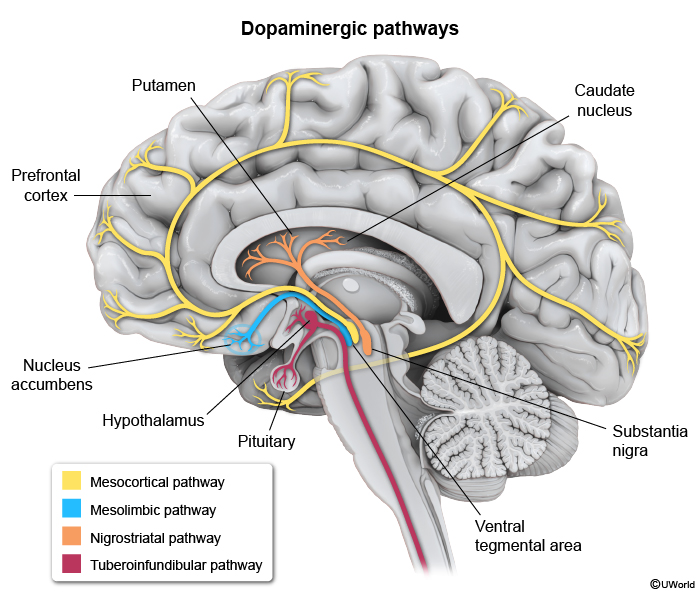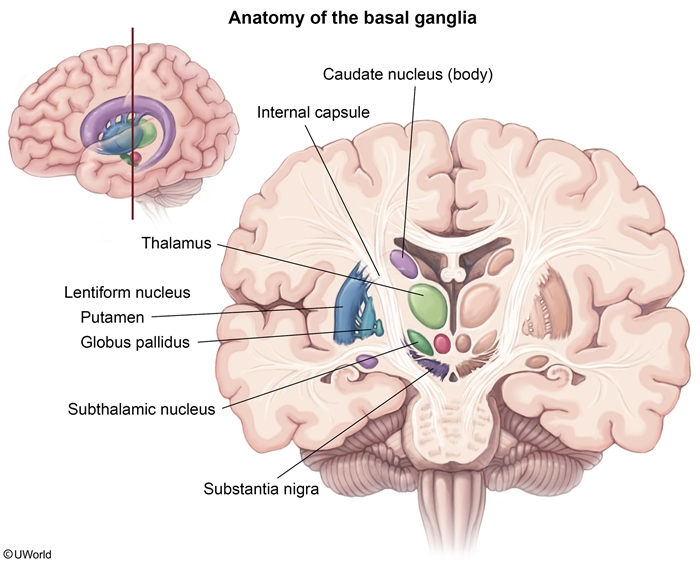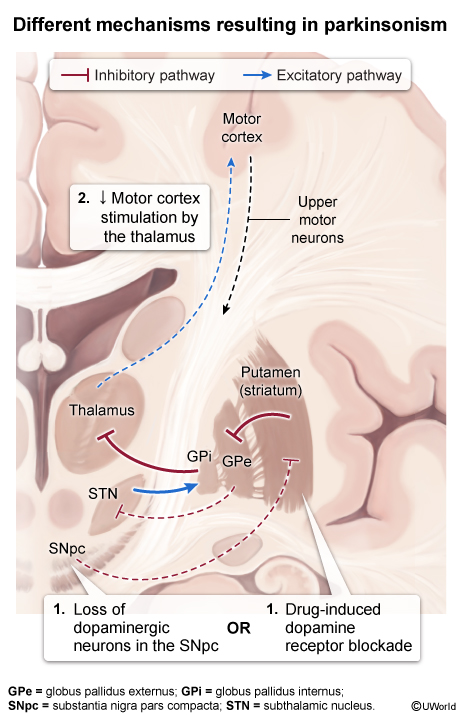Extrapyramidal Symptoms
Article Sections
Introduction
Extrapyramidal symptoms (EPS) are movement disturbances caused by dopamine receptor blockers (eg, antipsychotics, metoclopramide, prochlorperazine). EPS include acute dystonia, akathisia, drug-induced parkinsonism, tardive dyskinesia (TD), and withdrawal-emergent dyskinesia. Acute dyskinesia (eg, acute dystonia, akathisia) typically presents within a few hours or days after initiation/dose increase of a dopamine receptor blocker, whereas TD and withdrawal-emergent dyskinesia present much later (usually >6 months later).
Pathogenesis and risk factors
The nigrostriatal pathway is a major dopaminergic pathway in the brain and plays a critical role in motor control (Figure 1). It is a component of the basal ganglia (Figure 2), which is part of the extrapyramidal system (ie, does not involve the corticospinal [pyramidal] tract). Normally, the inhibitory effects of dopaminergic neurons are balanced by the excitatory actions of muscarinic cholinergic neurons.
Continue Learning with UWorld
Get the full Extrapyramidal Symptoms article plus rich visuals, real-world cases, and in-depth insights from medical experts, all available through the UWorld Medical Library.
Figures


